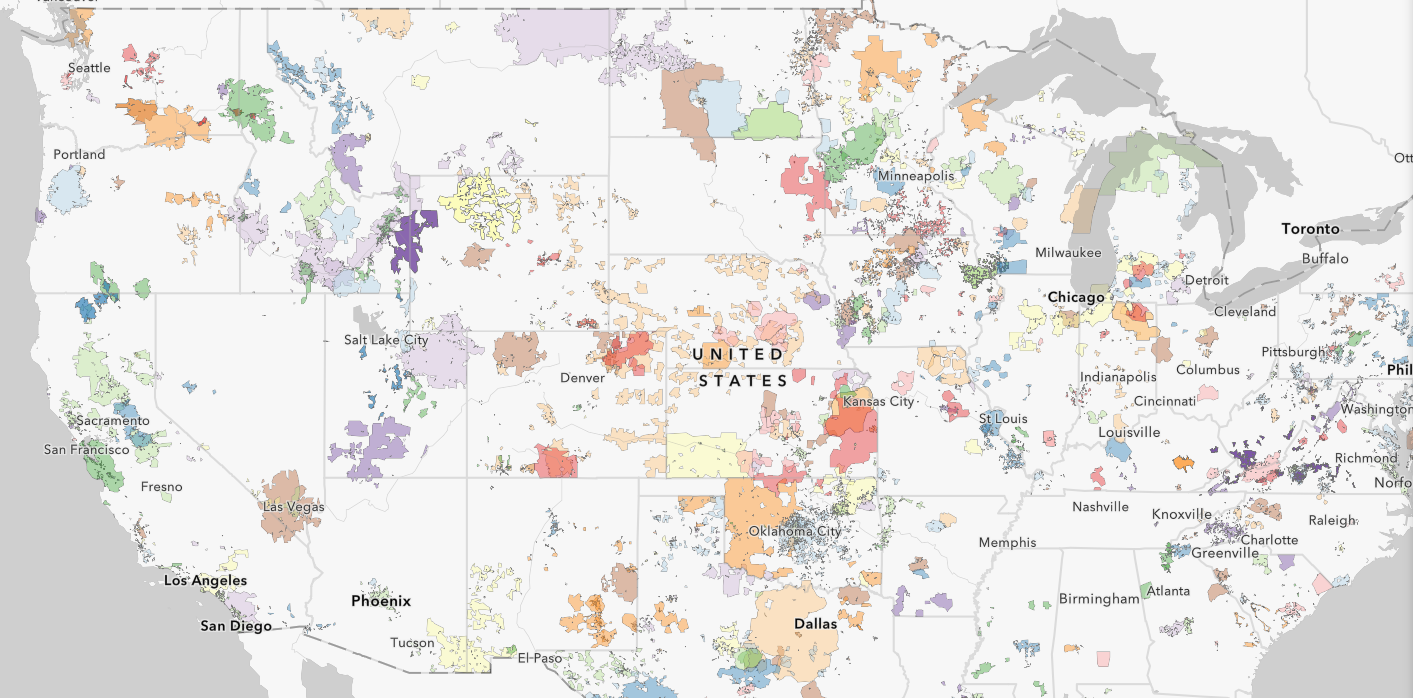New Map of Potential Rural Broadband Bidders, Problems With Lifeline, Twitter’s ‘Read Before’ Feature
Cooperative Network Services, a consultant that works with broadband providers in the upper Midwest, recently created a map plotting the current service areas of bidders in the upcoming Rural Digital Opportunity Fund auction. The map includes information from 366 of the 505 of providers who applied.

Cooperative Network Services, a consultant that works with broadband providers in the upper Midwest, recently created a map plotting the current service areas of bidders in the upcoming Rural Digital Opportunity Fund auction.
The map includes information from 366 of the 505 of providers who applied. This map does not include the nation’s largest cable companies and publicly held telcos, satellite providers, those bidding under disguised names, and “consortia or bidders that didn’t offer service as of when FCC broadband availability data was collected and for whom additional serving area information could not be found.”
Some of the large so-called “price-cap” carriers, such as Consolidated Communications, CenturyLink, Cincinnati Bell, Frontier, Verizon and Windstream, are not shown on the map, even though they still plan to bid in the auction.

Many of these companies did not perform well in the Connect America Fund II auction. They may or may not have success this time around.
A comparison of maps shows differences between the areas currently served and the areas available for bid in the auction.
Many unserved areas have potential bidders operating nearby, said CNS. Small rural telecos, rural electric companies, and some fixed wireless providers tend to bid on areas close to where they already operate.
Satellite providers may be more involved in this auction as ViaSat, one of the biggest winners in CAF II, plans to bid again, as well as its rival Hughes Network Systems, and Space X.
Problems with FCC’s changes in Lifeline program providing free phone and internet
The FCC’s changes to the lifeline program, specifically providing free phone and internet, have caused problems for service providers, according to the Sarasota Herald-Tribune in Florida.
The changes dictate that Lifeline’s mobile carriers will have to offer 4.5 GB of data each month, up from 3 GB, starting December 1, 2020.
The Lifeline program provides a $9.25 subsidy to those who receive federal help through Medicaid, Tribal Head Start, Federal Public Housing Assistance or similar programs, or can show earnings of less than 135% of the poverty line. This rate hasn’t changed since 2016 when Lifeline’s minimum service standards were created.
Senior TracFone executive Mark Rubin pointed out that the “asymmetry between the Lifeline subsidy amount – currently at $9.25 – and the retail price of service offerings that would meet the new service requirements,” would greatly impact consumer rates.
“Plans including that much data cost $25 to $40 per month,” explained John Heitmann, a lawyer representing the National Lifeline Association, who wrote a letter to the FCC including the prices of dozens of companies.
“There is simply no evidence in the docket to suggest that a 50% increase in the required mobile broadband data – with no corresponding increase in subsidy support – can be provided without forcing a copay on consumers,” He wrote.
Olivia Wein, an attorney with the National Consumer Law Center (NCLC), doubted that a copay could be successfully passed to consumers, as many of them have been unbanked or unhoused.
The story in the Sarasota, Florida, newspaper was produced came in a partnership with Aspirations Journalism, an initiative of The Patterson Foundation.
Twitter’s ‘read before’ feature is causing people to open articles before retweeting
Twitter recently announced that they will be rolling out a feature that asks people if they’ve read an article before they retweet it.
Since the feature began testing back in June, Twitter has found that people were 40 percent more likely to open articles after seeing the prompt and 33 percent more likely to read the article before retweeting, according to Mashable.
Twitter will make one more tweak to the feature before the launch: after users see the prompt the first time, subsequent prompts will show up smaller.
These changes fall in line with twitter’s recent efforts to improve quality content and fight fake news, as seen with their tightening of Covid-19 rules and flagging Trump’s election tweets. This was also supported by a recent MIT study that showed that people were more likely to repost fake news than real news.
“It’s easy for articles to go viral on Twitter. At times, this can be great for sharing information, but can also be detrimental for discourse, especially if people haven’t read what they’re Tweeting,” said Twitter Director of Product Management Suzanne Xie, reports TechCrunch.








